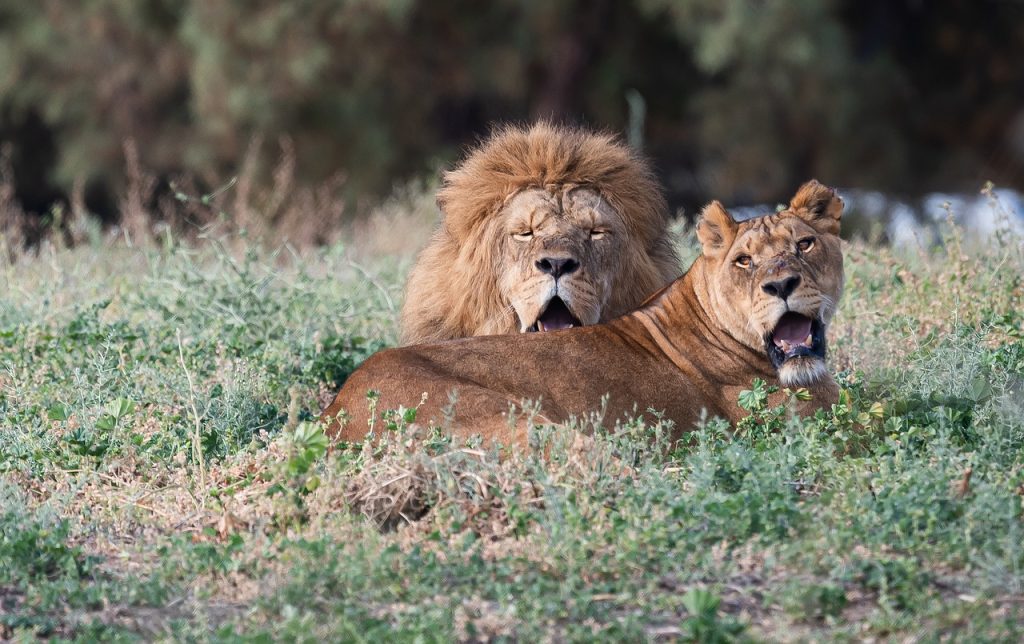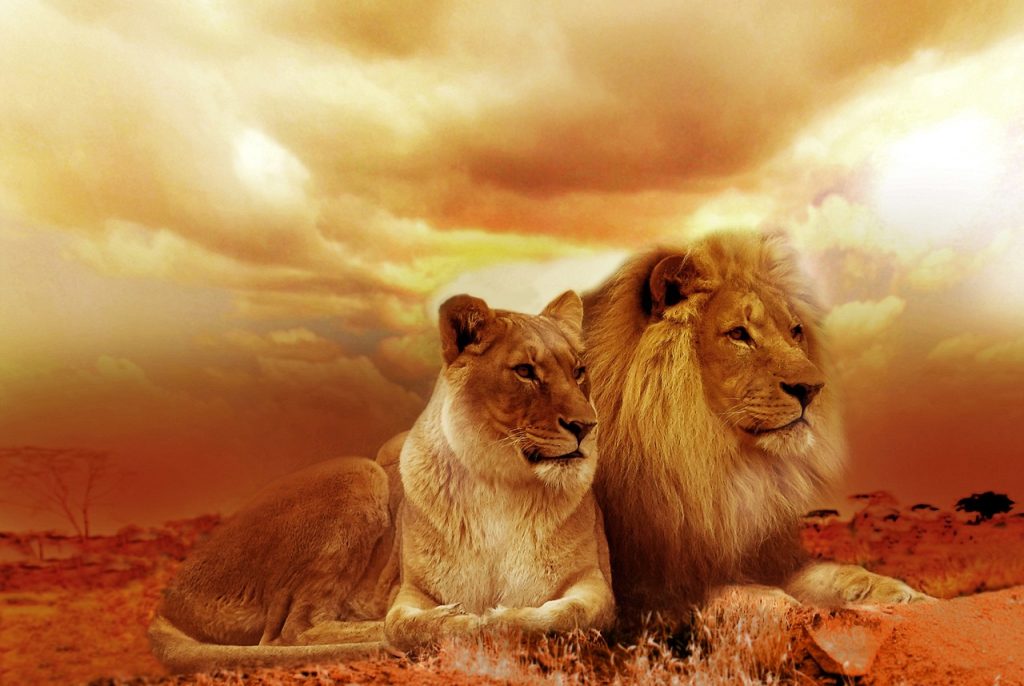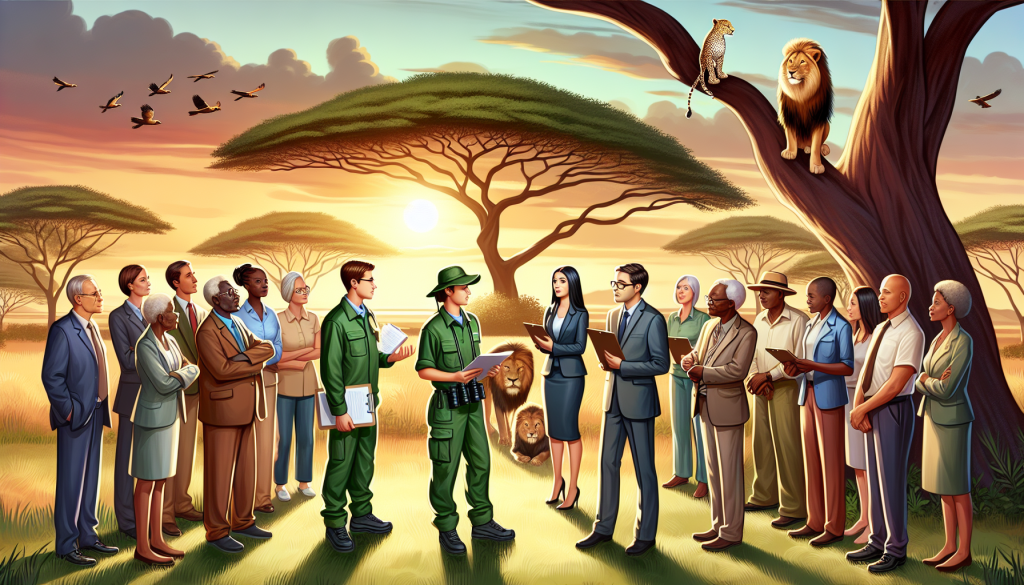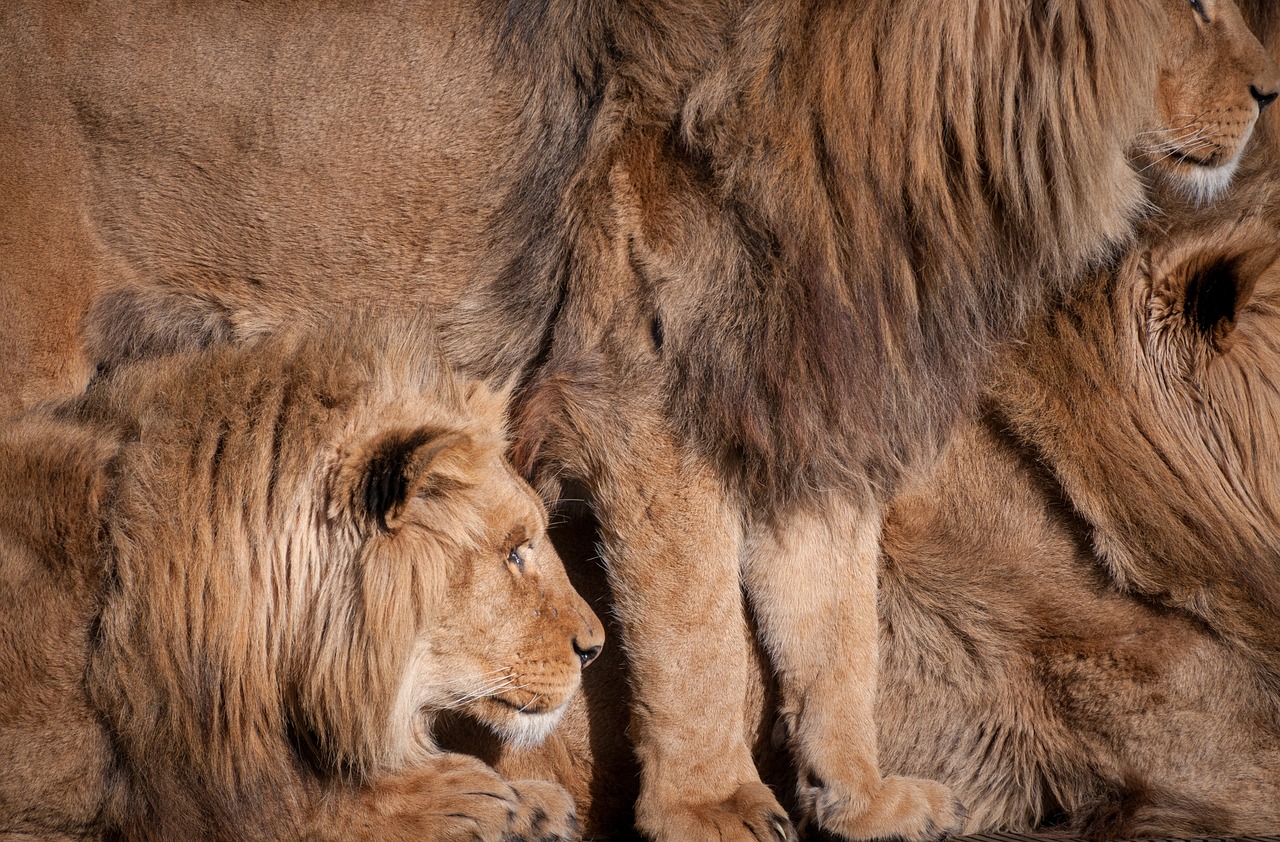The article highlights the importance of community dialogues in fostering understanding and finding solutions to issues surrounding lions. By engaging in open and constructive conversations, communities can gain a deeper understanding of the challenges faced by lions and work together to develop effective solutions that promote coexistence. These dialogues provide a platform for sharing knowledge, addressing concerns, and building empathy, ultimately leading to a more harmonious relationship between humans and lions.

Background on Lions and Human-Wildlife Conflict
The importance of lions in ecosystems
Lions play a crucial role in maintaining the balance of ecosystems. As top predators, they help regulate prey populations and prevent overgrazing. This, in turn, helps maintain the diversity of plant and animal species in their habitats. Lions also contribute to the promotion of tourism, bringing economic benefits to local communities.
Human-wildlife conflict and its impact on lion populations
Human-wildlife conflict arises when there is competition for resources between humans and wildlife. In the case of lions, conflicts often occur when they come into contact with livestock or when their natural habitats are encroached upon by human activities. This conflict has led to retaliatory killings of lions, resulting in a decline in their populations.
The need for community involvement in lion conservation
Lion conservation cannot be successful without the active participation and support of local communities. These communities are on the front lines of human-wildlife conflict and have a unique understanding of the challenges and potential solutions. Engaging communities in dialogue and decision-making processes is crucial to ensure the long-term conservation of lions and their habitats.
Overview of Community Dialogues
Purpose of community dialogues
Community dialogues serve as platforms for fostering understanding, building relationships, and finding solutions to human-wildlife conflict issues. These dialogues provide a safe and inclusive space where community members, stakeholders, conservation organizations, and researchers can come together to share knowledge, perspectives, and ideas.
Engaging stakeholders in conservation efforts
Stakeholders, including local authorities, conservation organizations, community members, and traditional leaders, are key actors in lion conservation. Community dialogues create opportunities for these stakeholders to actively participate in the decision-making process, taking into account their diverse perspectives, experiences, and needs.
Creating a safe and inclusive space for dialogue
Creating a safe and inclusive space for dialogue is essential to ensure that all participants feel comfortable sharing their views. By fostering an atmosphere of respect and non-judgment, community dialogues allow for open and constructive discussions. This environment promotes the exchange of ideas and the identification of collaborative solutions.
Process of Organizing Community Dialogues
Identifying key community stakeholders
Identifying key community stakeholders is a crucial step in organizing community dialogues. These stakeholders may include village leaders, elders, women’s groups, youth associations, and representatives from local businesses and organizations. Involving a diverse range of stakeholders ensures that different perspectives and interests are represented during the dialogue process.
Collaborating with local organizations and authorities
Collaborating with local organizations and authorities is vital for the success of community dialogues. These organizations often have established networks and relationships within the community, making them valuable partners in engaging stakeholders and mobilizing resources. Additionally, involving local authorities helps ensure the sustainability and long-term impact of the dialogue process.
Securing funding and resources for dialogues
Organizing community dialogues requires financial resources to cover various expenses, such as venue rental, transportation, and facilitator fees. Seeking funding from governmental agencies, non-governmental organizations, and private sponsors can help secure the necessary resources. Local organizations and businesses can also contribute in-kind support, such as providing meeting spaces or refreshments.
Selecting Dialogue Topics
Understanding the specific lion-related issues in the community
Before selecting dialogue topics, it is important to have a comprehensive understanding of the specific lion-related issues in the community. This can be achieved through surveys, interviews, and field assessments. These efforts help identify the specific challenges faced by the community in relation to lion conservation and human-wildlife conflict.
Addressing concerns and perspectives of different stakeholders
When selecting dialogue topics, it is essential to address the concerns and perspectives of different stakeholders. This ensures that all viewpoints are taken into consideration and that a balanced dialogue can take place. By acknowledging and respecting the diverse perspectives, the dialogue process can promote empathy and understanding.
Prioritizing topics based on urgency and impact
Not all topics related to lion conservation and human-wildlife conflict can be addressed simultaneously. Prioritizing topics based on their urgency and potential impact helps focus the dialogue on actionable and effective solutions. By addressing the most pressing issues first, community dialogues can generate tangible outcomes that lead to positive changes.

Facilitation Techniques for Community Dialogues
Building trust and rapport among participants
Building trust and rapport among participants is crucial for creating a conducive environment for dialogue. Facilitators can use ice-breaking activities, team-building exercises, and personal introductions to help participants feel more comfortable and connected. Trust allows participants to share their perspectives openly and facilitates collaboration towards finding solutions.
Creating a non-judgmental and respectful environment
Facilitators should establish ground rules that emphasize respectful communication and active listening. This encourages participants to be open-minded, tolerant, and understanding of different viewpoints. Facilitators must intervene if any disrespectful behavior arises and guide participants towards constructive dialogue.
Using participatory methods to encourage active engagement
Participatory methods, such as group discussions, brainstorming sessions, and role-playing exercises, encourage active engagement from participants. These methods foster collaboration, generate diverse ideas, and ensure that all voices are heard. Facilitators should ensure that the dialogue remains inclusive, giving everyone an equal opportunity to contribute.
Inclusion of Traditional Knowledge and Cultural Practices
Recognizing the value of traditional knowledge in lion conservation
Traditional knowledge, passed down through generations, holds valuable insights into coexisting with wildlife. This knowledge often includes traditional hunting practices, rituals, and beliefs that promote balance and respect for nature. Inclusion of traditional knowledge in community dialogues acknowledges its importance and allows it to inform lion conservation strategies.
Respecting cultural practices while promoting coexistence
Respecting and preserving cultural practices is essential when addressing lion conservation. Community dialogues should aim to find a balance between conserving lion populations and respecting cultural practices deeply rooted in the community. By incorporating cultural perspectives, the dialogue process can foster coexistence that respects both conservation goals and cultural heritage.
Integrating traditional leaders and elders in the dialogues
Traditional leaders and elders hold significant influence and are important conduits of traditional knowledge and cultural practices. Including them in the dialogue process gives weight to the discussions and helps build trust among community members. Their presence allows for the exchange of intergenerational wisdom and promotes a holistic approach to lion conservation.

Sharing Scientific Insights and Research Findings
Presenting scientific data on lion behavior and ecology
Presenting scientific data on lion behavior and ecology during community dialogues helps participants understand the importance of lions in ecosystems. This information reinforces the need for conservation efforts and facilitates informed decision-making. The data can include population trends, habitat requirements, and the role of lions in maintaining ecological balance.
Explaining the benefits of lion conservation to local communities
Engaging local communities in lion conservation requires highlighting the benefits it brings to their daily lives. This can include economic opportunities through wildlife tourism, improved ecological health in their surroundings, and the preservation of cultural heritage. Communicating these benefits fosters understanding and creates a sense of ownership and pride in lion conservation efforts.
Making research findings accessible and easily understandable
Translating complex scientific research findings into accessible language is crucial for effective communication during community dialogues. Presenting information in a clear and concise manner, supported by visuals or storytelling, enhances understanding and engagement. This ensures that even participants without scientific backgrounds can actively contribute to the dialogue.
Identifying Potential Solutions
Brainstorming possible strategies for mitigating human-wildlife conflict
Community dialogues provide a platform for brainstorming a wide range of solutions to mitigate human-wildlife conflict. Participants can propose ideas such as livestock management techniques, community-run conservation programs, and habitat restoration efforts. The collective intelligence and diverse perspectives fostered by the dialogue process can generate innovative and effective solutions.
Considering the socio-economic impact of different solutions
When identifying potential solutions, it is important to consider their socio-economic impact on the community. Sustainable solutions should take into account the livelihoods, aspirations, and social dynamics of the community. By assessing the potential consequences, community dialogues can foster solutions that address human-wildlife conflict while promoting community well-being and resilience.
Seeking compromise and consensus among participants
Community dialogues aim to find common ground and reach consensus among participants. This requires active listening, respectful communication, and a willingness to find compromise. Facilitators can guide the dialogue process towards consensus-building by highlighting shared objectives and values. A collaborative approach ensures that proposed solutions are widely supported and have a higher chance of successful implementation.

Collaborating with Conservation Organizations
Utilizing resources and expertise from conservation organizations
Collaborating with conservation organizations provides valuable resources, expertise, and technical support for community dialogues. These organizations often have access to scientific research, funding opportunities, and networking platforms that can strengthen the dialogue process. By leveraging their resources, community dialogues can have a broader impact and contribute to more sustainable conservation outcomes.
Forming partnerships for implementing conservation initiatives
Partnerships with conservation organizations enable the implementation of conservation initiatives resulting from community dialogues. These partnerships can involve joint fundraising efforts, capacity building programs, and direct project implementation. By aligning community priorities with the expertise and resources of conservation organizations, the effectiveness and sustainability of conservation efforts can be enhanced.
Monitoring and evaluating the effectiveness of collaborative efforts
Monitoring and evaluating the effectiveness of collaborative efforts is crucial to ensuring the long-term impact of lion conservation initiatives. By collecting data on the outcomes and impacts of implemented projects, stakeholders can assess progress and make informed decisions for future conservation actions. Regular evaluation allows for adaptive management, ensuring that community dialogues and associated initiatives remain effective and relevant.
Disseminating Dialogue Outcomes and Action Plans
Communicating the key outcomes and recommendations to the community
Effectively communicating the key outcomes and recommendations of community dialogues is essential for ensuring community engagement and ownership. This can be done through public meetings, community gatherings, and media channels accessible to community members. Clear and accessible messaging encourages community members to stay informed and actively participate in the implementation of action plans.
Creating awareness about the importance of collective action
Community dialogues serve as a reminder of the importance of collective action in lion conservation. By sharing success stories, challenges, and the potential impact of community-led initiatives, awareness can be raised about the value of collaboration and involvement. Creating a sense of collective responsibility fosters long-term commitment to lion conservation efforts.
Implementing and reviewing action plans regularly
Action plans developed during community dialogues should be implemented and regularly reviewed to ensure progress towards desired conservation outcomes. This involves monitoring the implementation of activities, assessing their effectiveness, and making necessary adjustments. By incorporating feedback from stakeholders, action plans can be revised and improved, strengthening their impact on human-wildlife conflict and lion conservation.


